#New England history
Explore tagged Tumblr posts
Note
What’s the New England vampire panic?
:D
:D :D :D
IT. IS. FUN.
(to research- it was probably horrifying to live through. just so we're clear)
basiclly, it was a series of incidents in response to tuberculosis outbreaks throughout New England (Connecticut, Massachusetts, Rhode Island, New Hampshire, Maine, and Vermont) during the late 18th and 19th centuries. it wasn't actually a single event, but rather isolated cases of TB being blamed on revenants rather than disease. where this belief prevailed, people frequently exhumed the alleged vampire, burned their heart or another organ on a blacksmith's anvil, and mixed the ashes into water for living consumptive people to drink
unsurprisingly, this never worked
though the earliest documented incident was in 1793, most people's awareness of this phenomenon coalesces around the 1892 death and exhumation of Mercy Lena Brown, of Exeter, Rhode Island. after dying of TB at age 19, Mercy was posthumously accused of afflicting her brother with the disease. despite drinking the ashes of her heart and liver in water, he- shocker! -died. the Brown case reached the popular press, who reacted to it with a sort of morbid fascination. "look what these crazy backwards Country People did" energy. Brown's grave has become a popular site for legend-tripping among Exeter teens since then- the game is to stand there and say, "Mercy Lena Brown, are you a vampire?" and see what happens
aforementioned classism and/or regional prejudice is a fascinating aspect of the Vampire Panic(s). like I said, a lot of the commentary- even going back to the 18th century -takes a tone of bemused horror that such superstitions could still exist, and of judgment on the intelligence of those involved
but honestly, before widespread understanding of TB bacteria...it COULD have been vampires, for all people knew. most of them were aware that it wasn't, but when your choices are "it's a disease; do nothing and watch your loved one die" vs. "it's vampires; do this thing and your loved one might not die, even though there's no proof it works," one might want to feel like one was at least trying
and unlike other mass hysteria cases a la Salem, nobody actually got killed because of a Vampire Panic. just saying
(there's a theory that Bram Stoker may have been partially inspired by the Brown case in writing Dracula, but I've seen no compelling evidence that it inspired him any more or less than any other vampire story)
#ask#anon#history#long post#vampires#cannibalism mention#new england vampire panic#new england history
201 notes
·
View notes
Text

If I had a nickel for every time Massachusetts and Connecticut planned to invade Rhode Island for being cooler than them,
5 notes
·
View notes
Text
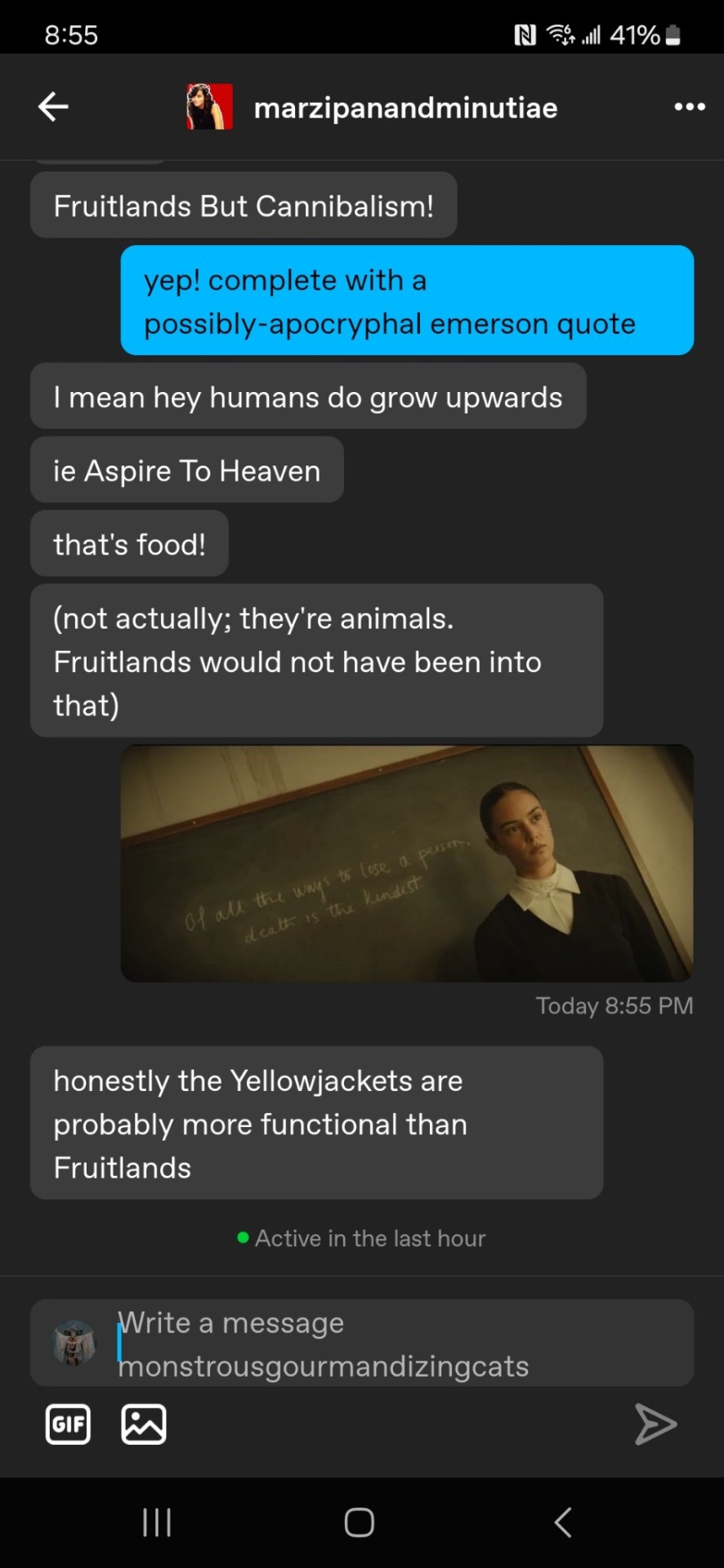
@marzipanandminutiae does not watch this show, but...she's not wrong.
2 notes
·
View notes
Text
Andy's love for and dedication to this history has shone throughout this series. You really feel it, and it just makes these videos extra special.
Also, s/o to Embracehistoria for those maps.
youtube
3 notes
·
View notes
Text

@massachusetts-official
19K notes
·
View notes
Text
Why Montpelier Became Vermont's Capital: A Historical Perspective
Nestled along the banks of the Winooski River and framed by rolling green hills, Montpelier stands as a charming testament to Vermont’s unique spirit. With a population just shy of 8,000 residents, it holds the title of the smallest state capital in the entire nation. But despite its modest size, Montpelier’s history is anything but small. A New State Needs a Center When Vermont officially…
#green mountain state#green mountains#history#history of montpelier#montpelier#montpelier vermont#nature#new england history#new-england#small town capitals#state capitals#travel#vermont#vermont government#vermont history#vermont politics#vermont small towns#Vermont Travel#why montpelier is capital#winooski river
0 notes
Text
hi, native new englander here! they’re called “flying death’s heads”, and they symbolize a couple of different ideas, mostly about the transience of life and the imminence of death and the ascension of the soul into the afterlife, and was a non-religious decorative motif used on gravestones in the 18th and 19th centuries
i have a necklace of a flying death’s head that was molded directly from a 1700s gravestone*:
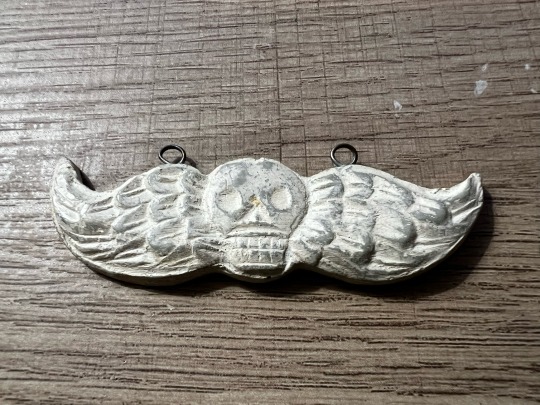
*this group always gets full permission from the municipality and the cemetery before they do anything
I love New England death's-head gravestones because there are some of horrific beauty that force you to confront Death head on

And then sometimes you get this instead

#New England#New England history#special interest: ACTIVATE#grave anthropology#death anthropology#death history
4K notes
·
View notes
Text


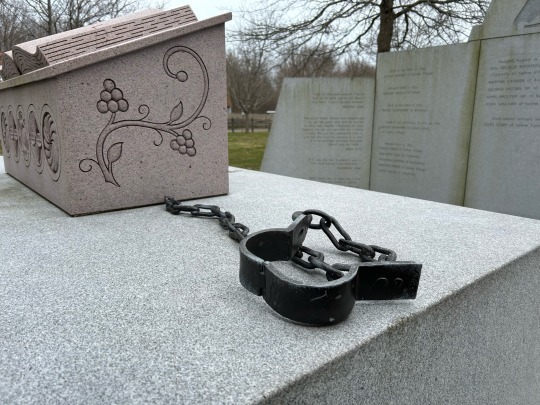


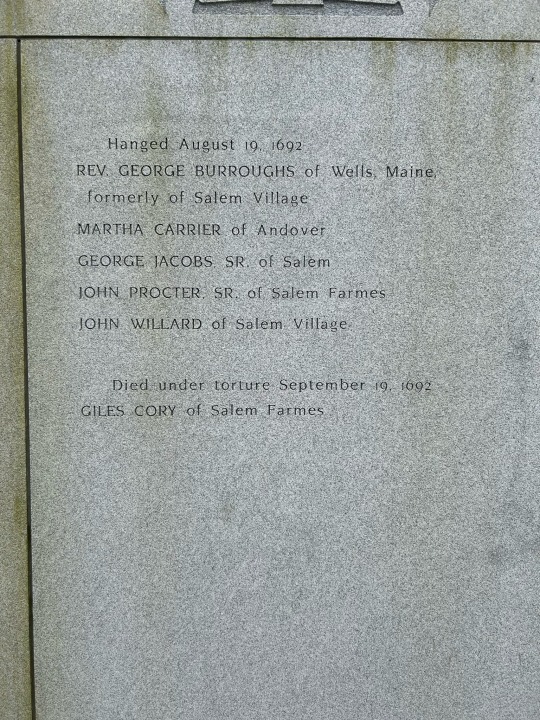


Across the street from the site of the Salem Village Meeting House stands a somber and poignant reminder of the injustices that took place there in 1692. The names and words of the innocent refusing to be lost to time.
0 notes
Text
Montgomery's Covered Bridges: Icons of Vermont's Rustic Beauty
Montgomery Vermont is home to six (or seven) covered bridges which are within six miles of Montgomery Center (see the map below). The reason I put a 7 in there is because there was or could be another covered bridge as well. I’ll talk about that at the end. Montgomery has more than the average number of covered bridges in the vicinity of the village and you can capture all 6 in a few hours. A bit…

View On WordPress
0 notes
Text
Sleet, Snow, Sapping, and Spring
As I write this, the dog and the kittens threaten to strike if I don’t build the blaze in the wood stove higher. March has proven once again to be traitorous, and sleety snow covers everything, including the bird feeders.I refused to do more about the bird feeder than creep outside in my slippers and knock the worst accumulation off it. I am now facing an insurrection over the stove. I’ll need…
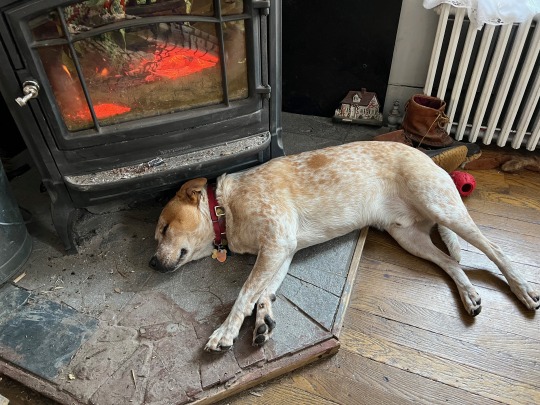
View On WordPress
#fowc#blogging#gardening#New England#New England foods#New England history#Ragtag Daily Prompt#Word of the Day Challenge
0 notes
Text
I saw some interesting discussion in the reblogs/comments about how her name could have come to be and wondering about her age and life, so I thought I could probably fill in a few details, and I was right! (I spend a lot of time in MA historical records because part of my family tree is from there.)
Cox/Cocks/Cocke/Cock are essentially the same surname. (The surname comes from a nickname meaning cock/rooster.) All spellings are common, especially in the early United States. Between low levels of literacy and basically no standards for spelling early on, the same name can be recorded differently even across one person's lifetime, and this happened to Submit! Submit was born 20 Sep 1702 in Dorchester, Province of Massachusetts Bay (The state, officially "Commonwealth of Massachusetts" or commonly called "Massachusetts" today, was not admitted to the Union until 6 Feb 1788.)

Image Description: Section of Dorchester, MA birth records for 1702 showing the birth of Submit Cox. Entry reads, "302. Submite the Daughter of John Cocke was Born the (20) of September 1702" Submit's father, John Cock/Cox, was born about 1658 at the Pemaquid Settlement in what is today Maine. Pemaquid had a long history of conflict (easy to Google, the Pemaquid Historic Site is still in existence today as one of the National Historic Landmarks in Maine), and it was likely the heightened conflict leading to the collapse of the Dominion of New England and joint attacks by the French and their Native allies that sent John Cox south to Dorchester. The Pemaquid settlement was razed in 1696, just six years before Submit was born. John's wife, Susannah Pope, was born in Dorchester, and the two of them were married there around 1680, which suggests it was just before this time when John moved to Dorchester. The settlement was relatively young; Dorchester was founded in 1630 by Puritans who had fled Dorchester, England. Susannah appears to have died in childbirth or shortly after Submit was born. Submit had an older brother named William who was eight years old when she was born, leaving John with a child and a newborn. John had seen a lot of struggle in his life at this point, which possibly influenced Submit's name. The colonists in New England, particularly Massachusetts Bay, were strongly influenced by the Protestant "Separatist" movement, even if they weren't originally Separatists themselves. They didn't have one completely solidified belief system, other than they were known as "Dissenters" - they were opposed to state interference in religious matters. (Particularly, they were sick of the Church of England and the king dictating how and where they could worship. This friction during the Stuart period would ultimately peak in the First English Civil War in 1642, but by then, Separatists were already fleeing to the colonies. Famously, the Mayflower carried a joint group of Separatists and Strangers (random non-Separatist people) to Cape Cod in 1620.) These people were highly religious and enormously superstitious, especially by today's standards. Their names often reflected religious ideals, Biblical figures, or important values to the Separatists. Submit is almost exclusively a Puritan name and reflects the idea of needing to "submit" to the Will of God and Providence. Her birth was a challenge to John's faith, as by that point he had lost everything and had two kids to raise regardless. (This is also how the city of Providence, RI, got its name.) Other similar names that sound strange today can be found among the Mayflower colonists (Love Brewster, Wrestling Brewster, Humility Cooper, Constance Hopkins, Oceanus Hopkins, Resolved White, Peregrine White, Desire Minter). Submit's own life was probably not "great" by today's standards. There isn't much recorded specifically about her life, other than a marriage record from 1725.

Image Description: Section of Dorchester, MA marriage record from 1725. Excerpt reads: "Thomas Maudsley Junr. & Submit Cocks, both of Dorchester, were Joined in Marriage byye Rev. Mr. John Danforth June 17th, 1725." Submit would have been about 23 when she married, which (contrary to popular belief) was pretty average for a first marriage. Her husband Thomas was almost exactly the same age as her (born 11 Sep 1702). Their families were close in the community, because Submit's older brother, William, married Thomas's elder half-sister, Thankful. When it comes to name spellings evolving over time, this also happened to Submit's married name. "Maudsley" became "Moseley" by the time their first child, Joseph, was born in Falmouth, ME, just 30 miles around the coast from Pemaquid. There is some indication her family might have retained land rights in what is today Maine.
There is no official death record known for Submit. Her date of death is estimated at 1735 because her youngest child, William, was born 5 Dec 1734, and Thomas remarried to Sarah Scott of Falmouth 24 Nov 1736. This appears to have been a tumultuous time in the family's history. On top of the usual challenges of life during the colonial era, it was also during this period that Governor Jonathan Belcher upset the political and economic landscape of Massachusetts, ultimately propelling important colonists such as Samuel Adams against the Crown and Parliament. The Moseley family descendants today are still trying to piece together this period of their family's history as records are scarce and people moved frequently. As a side note, whether or not it actually happened, Submit Cocks COULD have potentially understood...ahem, alternative...uses of her name. Using the word "cock" to mean penis is solidly recorded since 1610, but has seen at least incidental use since at least the early 1300s. Asshole kids were 100% making fun of her surname long before she was born. :)
she's a ten but she doesn't know that there was a woman in 18th-century Boston named Submit Cox
(later Submit Maudsley when she married. born 1702; died 1735)
#submit cocks#yes i did just tag that#lol#history#new england history#colonial history#massachusetts
393 notes
·
View notes
Text
people who don't study history will simply never understand the joy of reading historian beef. there's nothing like it
#when they're reviewing each other's work and they're just SHITTING ON IT????? wonderful#when you can tell the historian HATES whichever historical figure(s) they're writing about? incredible#one thing we must remember is that historians are just academic gossipers xx#what is JSTOR for if not to read the DRAMA#reading an absolutely SCATCHING rebuttal of an article on New England migration and honestly??? having a wonderful time#sometimes the history student just jumps out#history
5K notes
·
View notes
Text

This is so funny to me. (Winthrop's explaining here some of the reasons for and against formally codifying the laws)
"We could never go against English laws!! 😠 By which, of course, I mean that we can't put it in writing when we do."
9 notes
·
View notes
Text
I'd meant to look into the consumption cases in Vermont that got treated as revenants... I don't know when I'm going to personally go down that rabbit hole at this rate, but there's a list of sources in the video description so I'm bookmarking this for later.
Interesting that there seems to be more attention paid to excising the liver and lungs, rather than just the heart. The lungs almost make sense in the context of TB, but the liver too? Hepatic TB will enlarge your liver, and seeing an enlarged liver in a body suspected of being a vampire would certainly implicate it in whatever you thought was going on. But also, there's a long history of seeing the liver as the seat of the soul or the source of the vital energy that animates the body. Galen conceived of the liver as the most important organ in the body, seeing it as responsible for all sorts of fluid exchange, including the production of bile and the conversion of food into blood. So the liver might have been seen as the offending organ responsible for converting the life energy of others into fresh blood for the revenant.
Still blows my mind that Galen--yes, the second-century Roman Empire doctor guy--had such a huge influence on medicine well into the modern era. Hepatocentrism and cardiocentrism coexisted as competing models for centuries, but even as modern medicine came to align itself with cardiocentrism, the idea of the liver as the most important organ still hung on in the cultural imagination into the 19th century. I guess in rural New England folk medicine it hung on for a lot longer than it did in wider North American popular culture.
Most of the newspaper articles presented are from the 1850s-1870s and have this tone of, "can you believe there's people around here who do this shit?"--it's a "cringe superstition" as our host here puts it. And yet, collectively they are painting the picture of a deeply-embedded, persistent folk belief in New England that has its roots in 16th- and 17th-century European revenant legends. This was definitely a thing. Can you blame people, really? There was no cure for TB back then. Outbreaks could devastate entire families. You'll try a lot of things when you're desperate enough.
youtube
#New England history#vampires#modern magic and medicine#bookmarking this for later#Dime Store Adventures
3 notes
·
View notes
Text

Autumn's majesty.
New England
1958
#vintage camping#campfire light#new england#autumn#history#hiking#autumn vibes#autumn leaves#fall vibes#walking#forests#1950s
737 notes
·
View notes
Text

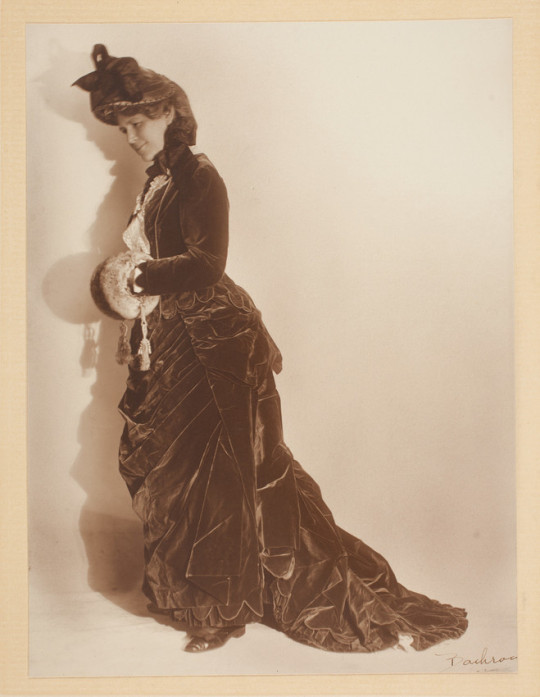
Winter Ensemble
1880s
Anyone living in New England realizes that dressing in winter means dressing for warmth. A stylish few, however, somehow manage to combine warmth with elegance. This ensemble was purchased by Miss C. L. W. French of Roxbury and Boston, Massachusetts, from Mlle Lipman's establishment in Paris for the lavish sum of 1,600 francs. Miss French surely would have impressed anyone as she strolled along the Commonwealth Avenue mall or rode down Beacon Street in a sleigh.
The original bill and a photograph of one of Miss French's relatives wearing the dress in 1920 were also given to SPNEA. Along with the photographs, the donation included a program from a Suffrage Pageant in 1920. This tantalizing bit of evidence suggests that Miss French may have been a suffragette, for this dress was worn in 1920 by a relative at a celebration of the Nineteenth Amendment awarding women the vote.
Historic New England (Accession Number: 1990.507A-G)
#ensemble#fashion history#historical fashion#1880s#19th century#gilded age#belle epoque#1880#1885#1889#bustle era#photography#united states#france#silk#fur#velvet#blue#white#historic new england
772 notes
·
View notes